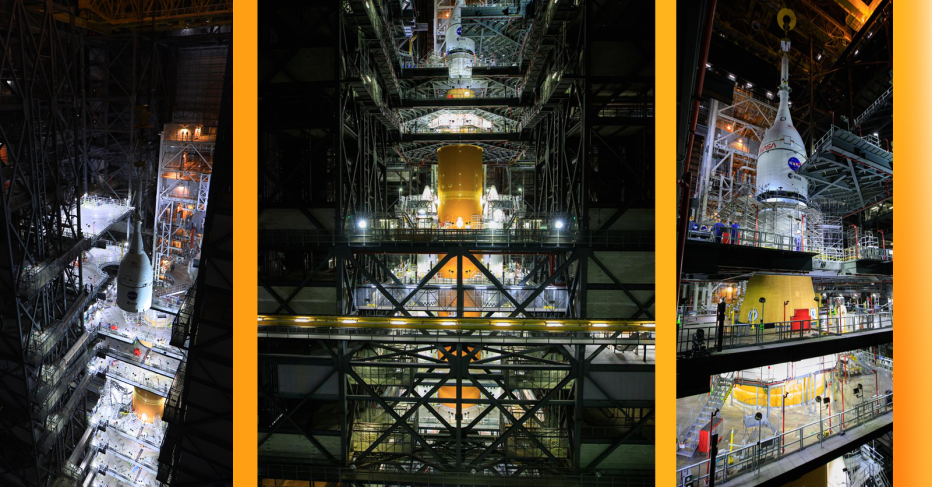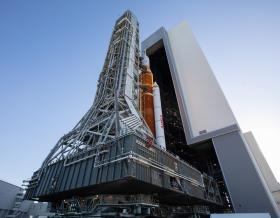
Photo Credit: NASA
NASA’s Artemis I Mission: Rocket Assembly Is Complete!
Jacobs and NASA completed stacking of all Artemis I flight hardware, paving the way for future Artemis missions. Under the Artemis program, NASA will land the first woman and the first person of color on the moon and establish sustainable exploration in preparation for missions to Mars.
The Artemis I mission will be the first flight test of the Space Launch System (SLS) and Orion spacecraft, NASA’s Deep Space Exploration Systems. Before the Artemis I launch from NASA’s Kennedy Space Center (KSC), NASA’s Exploration Ground Systems (EGS) and Jacobs teams stack the different elements of SLS and spacecraft on top of the mobile launcher inside the iconic Vehicle Assembly Building (VAB). The team is now conducting final testing and processing of the hardware in the VAB, ahead of rollout when the crawler-transporter will carry the skyscraper-sized duo to Launch Pad 39B.
“All the pieces are now in place for Artemis I,” said Jacobs Critical Mission Solutions Senior Vice President Steve Arnette. “The excitement keeps building as our team hits critical milestones leading up to the launch. Jacobs’ employees at multiple NASA centers, along with their NASA counterparts, have been steadily working– despite the challenges of the pandemic – toward this goal, and we are thrilled to complete the final stacking of the rocket that will put our nation on path to return humans to the lunar surface and beyond.”
As the Artemis prime contractor at KSC for NASA’s EGS program, Jacobs is responsible for receiving all SLS and Orion flight hardware, assembling and integrating all the components, then conducting final test and checkout before rolling to the pad for launch.
At facilities around KSC, the Jacobs team has received and processed the twin solid rocket boosters, the massive SLS core stage rocket, the launch vehicle stage adapter, the interim cryogenic propulsion stage, the Orion stage adapter and the Orion crew module, service module and launch abort system. All of these flight hardware components came together in the VAB, where the team lifted them into High Bay 3 to form a 322-foot-high stack on the mobile launcher.
When the SLS/Orion stack rolls to the launch pad at KSC and lifts off, it will showcase the most powerful rocket NASA has ever built, providing 8.8 million pounds of maximum thrust -15 percent more thrust than the Saturn V rocket.
As NASA’s largest services contractor, Jacobs is a provider and integrator of full lifecycle aerospace capability including design and construction; base, mission and launch operations; sustaining capital maintenance; secure and intelligent asset management; and development, modification, and testing processes for fixed assets supporting national government, military, defense and NASA, as well as commercial space companies.
In addition, Jacobs was recently selected by NASA as Agency-Level 2020 Small Business Industry Award (SBIA) Large Business Prime Contractor of the Year for KSC. Jacobs is prime contractor for NASA's Test and Operations Support Contract at KSC.












2c4e.jpg)


















_0ac2b.jpg)









2747.png)














